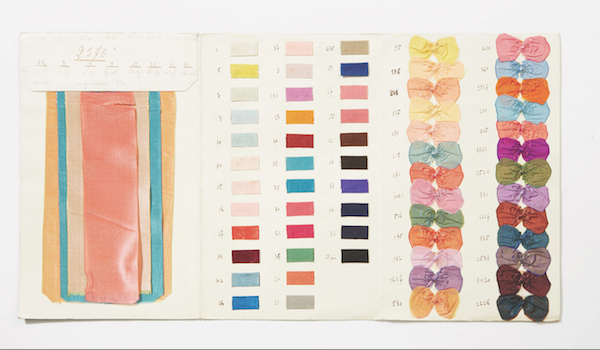
Where Your Ribbon Came From
As we begin to wrap our gifts and decorate our Christmas trees, we delve into the Selvedge archives to unearth the glistening history of ribbons in St. Etienne, from Selvedge issue 61...

‘He promised to bring me a bunch of blue ribbons,’ goes the nursery song, ‘to tie up my bonny brown hair.’ It seems even a child can understand that ribbons are special: a gift, an adornment to add beauty and distinctive touch to the wearer. Ribbon, a strip of woven material, defined by its selvedge, holds a special place in textile expression. They are used to add a flourish, to elevate out of the ordinary, to make a mark, whether this is on a dress, a wrapped gift or even a uniform. In art we can see the infinite variety of ways ribbons were used.

Ribbon as ornamentation on clothing is intimately linked to the development of silk weaving. Silk took centuries to arrive in Europe from China, where it was discovered that the fine thread made by the silkworm when forming its cocoon could be woven into a luxurious, shimmering cloth. Italian weavers were the first Europeans to work with silk, and their cloth became highly sought after by European royalty.

The French kings were keen to see silk cloth production established in France in order to ensure a domestic source of this exquisite fabric used by the Court and nobility. It was François I (1494-1547) who granted Lyon the monopoly on silk production. The town became wealthy on its silk manufacture, known as the ‘Grande Fabrique’; over time it also developed great skill in design for the silks it produced and made important technical advancements in weaving. To the south of Lyon and down the Rhône valley, sericulture developed and this provided the raw material for Lyon’s success…
You can read this article by Genevieve Woods in full in Selvedge issue 61.
